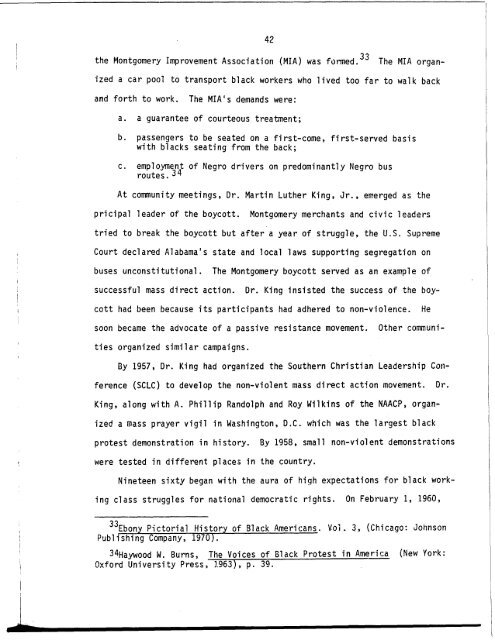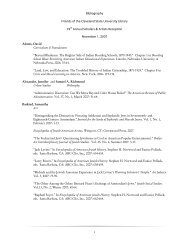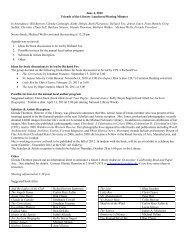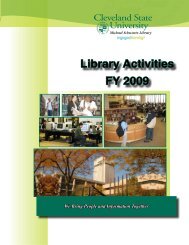revolutionary action movement (ram) - Michael Schwartz Library
revolutionary action movement (ram) - Michael Schwartz Library
revolutionary action movement (ram) - Michael Schwartz Library
You also want an ePaper? Increase the reach of your titles
YUMPU automatically turns print PDFs into web optimized ePapers that Google loves.
42<br />
the Montgomery Improvement Association (MIA) was formed . 33 The MIA organized<br />
a car pool<br />
to transport black workers who lived too far to walk back<br />
and forth to work . The MIA's demands were :<br />
a . a guarantee of courteous treatment ;<br />
b . passengers to be seated on a first-come<br />
with blacks seating from the back ;<br />
first-served basis<br />
c .<br />
employment of Negro drivers on predominantly Negro bus<br />
routes . 34<br />
At community meetings, Dr . Martin Luther King, Jr ., emerged as the<br />
pricipal leader of the boycott . Montgomery merchants and civic leaders<br />
tried to break the boycott but after a year of struggle, the U .S . Supreme<br />
Court declared Alabama's state and local laws supporting segregation on<br />
buses unconstitutional .<br />
The Montgomery boycott served as an example of<br />
successful mass direct <strong>action</strong> . Dr . King insisted the success of the boycott<br />
had been because its participants had adhered to non-violence . He<br />
soon became the advocate of a passive resistance <strong>movement</strong> . Other communities<br />
organized similar campaigns .<br />
By 1957, Dr . King had organized the Southern Christian Leadership Conference<br />
(SCLC) to develop the non-violent mass direct <strong>action</strong> <strong>movement</strong> . Dr .<br />
King, along with A .<br />
Phillip Randolph and Roy Wilkins of the NAACP, organ<br />
ized a mass prayer vigil in Washington, D .C . which was the largest black<br />
protest demonstration in history . By 1958, small non-violent demonstrations<br />
were tested in different places in the country .<br />
Nineteen sixty began with the aura of high expectations for black working<br />
class struggles for national democratic rights . On February 1, 1960,<br />
33 Ebony Pictorial History of Black Americans . Vol . 3, (Chicago : Johnson<br />
Publishing Company, 1970 .<br />
3 4 Haywood W . Burns, The Voices of Black Protest in Ame rica (New York :<br />
Oxford University Press, 7_96-73 -, p . 39 .








